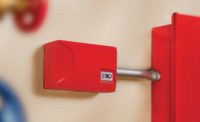When NFPA 72: 2010 was released, its sweeping changes and updates created a lot of excitement. Although there are further revisions in NFPA 72: 2013, this new edition will primarily be known for bringing further organization to the 2010 edition.
“The 2010 code was reorganized so that it would be conducive to adding additional chapters,” says Lee Richardson, NFPA senior electrical engineer and staff liaison for NFPA 72. “Previously, if we had to add a chapter, everything else would get renumbered. The 2010 edition not only included a high degree of technical changes, but it was also substantially revised in terms of organization.”
The following provides an overview of some of the revisions in the 2013 edition of NFPA 72. To review all the changes and updates, you should purchase a complete version of the code at www.nfpa.org.
Chapter 7: Documentation All in 1 Place
A key addition to the 2013 edition is a new Chapter 7 on documentation. Previously, documentation requirements were dispersed among the chapters according to each system’s requirements. Now, however, this new chapter becomes the go-to place for documentation requirements. AHJs can now locate what they need in one place rather than searching throughout the code. If documentation requirements are contained in other chapters, reference pointers in Chapter 7 show where they can be found.
There also are new documentation requirements, including a set of minimum documentation for any project. For example, a narrative now must be included as part of the submittal for all systems. Depending on the scope of the system, this new edition specifies additional documentation that may be needed.
In the 2010 edition, the Record of Completion and Inspection and Testing forms were revised to accommodate emergency communications systems, addressed in the new Chapter 24. The resulting forms were long and all inclusive — covering any system addressed by the code, regardless of how simple or complex the system.
The 2013 edition moves these forms to Chapter 7 and reorganizes them for ease of use. “Now you use a basic form for a simple fire alarm system,” Richardson says, “and additional add-on forms, as needed, for more complex systems.”
Chapter 10: Get Organized
NFPA also has reorganized Chapter 10 on Fundamentals, including moving the circuits and pathways material to Chapter 12.
Chapter 10 contains several important technical changes. Additional system impairment requirements stipulate that a supervising station must report to the AHJ whenever monitoring has been terminated for a system that is required to be monitored. In addition, a service provider must report any fire alarm system that has been out of service for more than eight hours to the AHJ. “Before, the owner was notified,” Richardson explains. “Now, the AHJ can get involved.”
In addition, qualification requirements for inspection, testing and service personnel have been updated to have a graded approach to the level of qualification required.
Chapter 12: Know What Takes Priority
The circuits and pathways chapter is mainly menu-driven: other chapters specify the requirements that apply. A new section addresses prioritization and segregation of life safety versus non-life-safety signals with shared pathways. As future signaling circuits and pathways become more intertwined, these shared pathway requirements will play a more important role. Another change in Chapter 12 will require all power- and non-power-limited circuits that enter or leave a building to have transient protection.
Chapter 14: Test Plans
The Inspection, Testing and Maintenance chapter includes a new requirement for submitting a test plan to the AHJ for all systems. The plan needs to clearly define the scope for the system testing and be part of the documentation with the test records.
The purpose is to identify the scope of what is being tested and how it is to be tested. Often, people perform testing in a segmented fashion. As a result, it is important to keep track of what has been done and what remains to be done. “The test plan is intended to help the people doing the testing,” explains Richardson, “making sure they complete everything that needs to be done.”
The test plan also better defines the boundaries of testing when other systems are interfaced with the fire alarm system or emergency communications system. “In earlier editions, the requirement was that anything a fire alarm system connected to had to be tested along with the fire alarm system,” Richardson explains. “But the problem was: how does NFPA 72 address testing requirements of systems that fall under the jurisdiction of other standards?”
The scope of the 2013 edition of NFPA 72 has been revised to limit testing requirements to only those systems covered by NFPA 72 — fire alarm and emergency communications systems. A new document, NFPA 4, Standard for Integrated Fire Protection and Life Safety System Testing, is currently being developed to address integrated testing of interconnected systems. However, the 2013 edition does provide some non-mandatory guidance on this subject in the annex section.
A more significant organization change is to the chapter’s inspection and testing tables. Earlier editions of the code had three tables; now consolidated into two. The new Inspection table covers the inspection frequencies from the previous editions and added inspection methods, which is a new technical change.
The second new table combines the previous Test Frequency table and Test Methods table. “This was done to keep all the information on one page instead of needing to flip back and forth between the tables,” Richardson says. “This should make the table much easier to use.”
The listing order to correlate components between the two tables was also modified for convenience. “For example, the inspection component for a battery is the same item number as in the test component,” Richardson points out.
Chapter 17: Go With the Flow
This chapter clarifies and updates total coverage requirements for initiating devices, especially in situations involving concealed spaces above suspended ceilings that are used as return air plenums. Provisions for the location and labeling of remote alarm and supervisory indicators also are updated.
Requirements addressing applications of spot-type smoke detectors in high-air-flow conditions also are updated and clarified.
Chapter 18: AV Placement
The most prevalent update to the notification appliances chapter is that the designer must identify the spaces where audible and visible notification is needed. “The designer had to identify the acoustically distinguishable spaces that required intelligibility and which spaces did not as part of the 2010 code. Now there are similar requirements for audible and visible notification,” Richardson describes.
For 2013, the requirements for textual visible notification (text and displays) from the 2010 edition in the emergency communications chapter are moved into the notification appliances chapter. They are expanded and modified to include fire applications (not just mass notification systems) and now must include location, mounting and performance requirements.
Chapter 24: ‘This is a Test’
The Emergency Communications Systems (ECS) chapter improves the common ECS requirements from the 2010 edition. One addition pertains to microphone use: Instructions for making voice announcements must now be posted, and test messages must specifically state: “This is a test.”
Other changes relate to mass notification systems (MNSs). Templates for each message developed for possible emergency response scenarios are now required. This includes updates to voice-message priority in in-building MNSs, as well as location and accessibility of emergency command centers. One update to in-building MNS documentation requirements calls for the owner to be provided a written sequence of operations and a copy of the site-specific software stored in non-volatile memory.
Chapter 26: Alarm Signal Verification
The Supervising Station Alarm Systems chapter includes a new provision that permits verification of an alarm from a commercial occupancy prior to notification of emergency services of an alarm condition. Alarm signal verification is permitted only when a set of conditions is met. Among other things, the responsible fire department must opt-in for each specific protected site. In addition, when an alarm signal is received, the supervising station must call the fire department to inform them that alarm verification is in process. Remember the old ad “Phone first”? For a digital alarm communicator transmitter, it also was true that you could phone “second.” Previously, the first channel had to be a phone line, and the second channel could be either another phone (land line) or a number of different technologies. Now, the second channel can no longer be another phone line. It has to be a different technology.
Another change on supervising stations addresses how to accommodate newer communications technologies, now called performance-based technologies. Secondary power requirements for shared communications equipment used with performance-based technologies is updated and more precisely defined.
Chapter 29: Low-Frequency Sounder Clarification
The Chapter 29 Committee removed an unintended consequence in the 2010 edition of the code that required low-frequency sounders in all sleeping areas where smoke alarms or household fire alarm systems are installed. During the development of the 2010 code, it was never the intent of the committee to require a low-frequency sounder in all sleeping areas. Rather, the intention was for the low-frequency audible alarm signal to be required only in sleeping spaces where there is the need to awaken people with hearing loss. In addition to addressing this unintended consequence with the updates included in the 2013 edition, a Tentative Interim Amendment (TIA) was issued for the 2010 edition that low-frequency sounders be required only in sleeping spaces to awaken people with hearing loss.
Provisions also are added to address the connection of a sprinkler waterflow switch to multiple station alarms or household fire alarm signal to activate an alarm signal. A homeowner still can use a keypad to request the fire department through a supervising station. The difference is that keypad activation now requires two manual simultaneous or sequential operations.
Annex
Annex material has been added to provide examples of technologies that fall under the requirements for performance-based technologies. This was done “because it’s relatively new and not the same as the traditional digital alarm communicator systems,” Richardson explains. “It’s the newer technology that’s beginning to replace the older technology. These changes are good for manufacturers and the industry as a whole.”
About the Author: David George is director of marketing communications at System Sensor, St. Charles, Ill. System Sensor is a global manufacturer of fire and life safety devices, specializing in smoke detection, carbon monoxide detection, and notification technology for worldwide applications.




